Bibiana Escribano
Occupational Therapist. Specialist in pshycomotricity, music therapy and sensory integration.
Read more postsAutism, or autism spectrum disorder (ASD) is a type of developmental disorder. It is a complex condition that can cause difficulties in communication, as it often affects the way the person perceives stimuli and socialises.
The struggle to integrate the sensations that are perceived, those provided by the senses, can lead to difficulties in learning, playing, interacting with other children, carrying out daily activities…
Javier has autistic spectrum disorder. He is not a very receptive child and has little responsiveness. For him, it is essential to know the environment and to know in which specific space the activities are carried out. With Javier we work with proprioceptive activities, adapted to his needs, for which we use the different elements of the multisensory classroom.
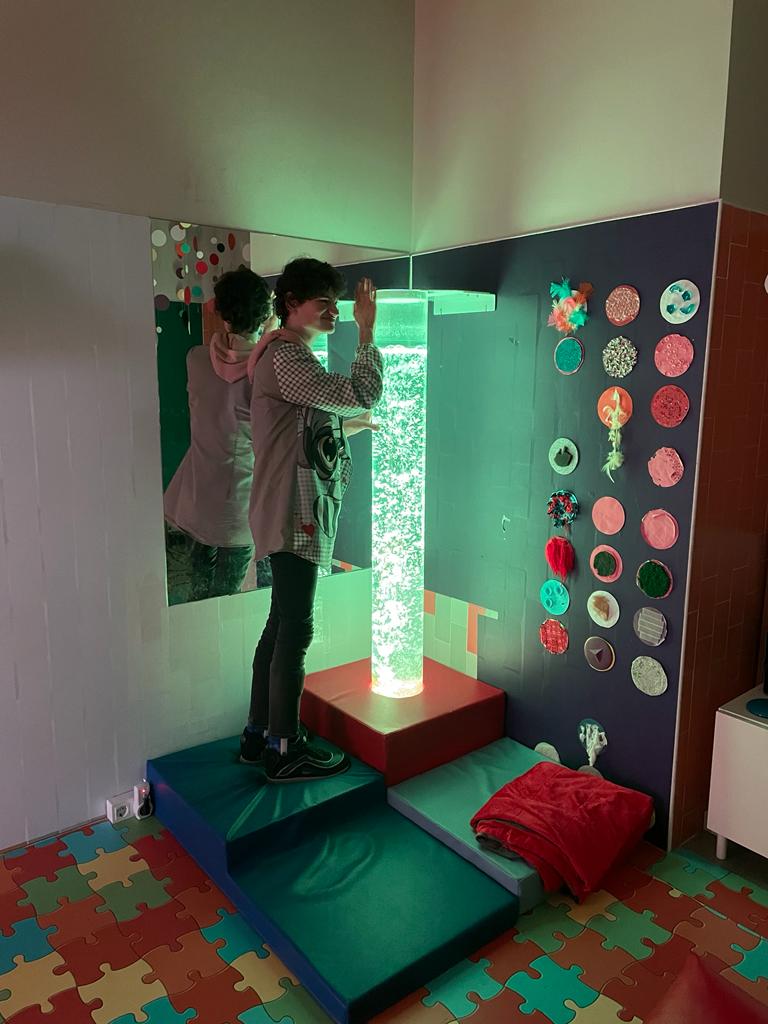
CEIP Alto Ebro is an ordinary school where there is a special education classroom. Seeking the greatest possible integration of special education students, breaks are taken together with the rest of the students in the school. Sometimes, however, as in Javier’s case, the small sensory stimulation room we have in the special classroom is used during the break.
Javier suffers from hyperreactivity to sensory stimuli and responds adversely to high-pitched and loud sounds. He is also visually fascinated by lights or spinning objects. Contexts with stimulus overload (lots of lights, loud sounds, people moving fast, crowds…) are a challenge for him. Break time upsets him and, for this reason, we arrange sessions in the sensory classroom for him.
“Proprioception is the sense that lets us perceive the location, movement, and action of parts of the body”.
Our aim when working with Javier is to stimulate him. Each child is unique, just as their needs. And Javier likes to know where the activities will take place and what materials will be used. For this reason, before the activities, we create moments for Javier to interact with the materials in the stimulation classroom, so that he gets to know them, knows what they do and can interact with them. It is essential for him to be familiar with the environment.
To achieve calm and relaxation after this overstimulation, we schedule an individualised session in the sensory stimulation room at our school. Our aim is to create a sense of safety, help Javier to integrate his sensations and achieve physical and mental relaxation.
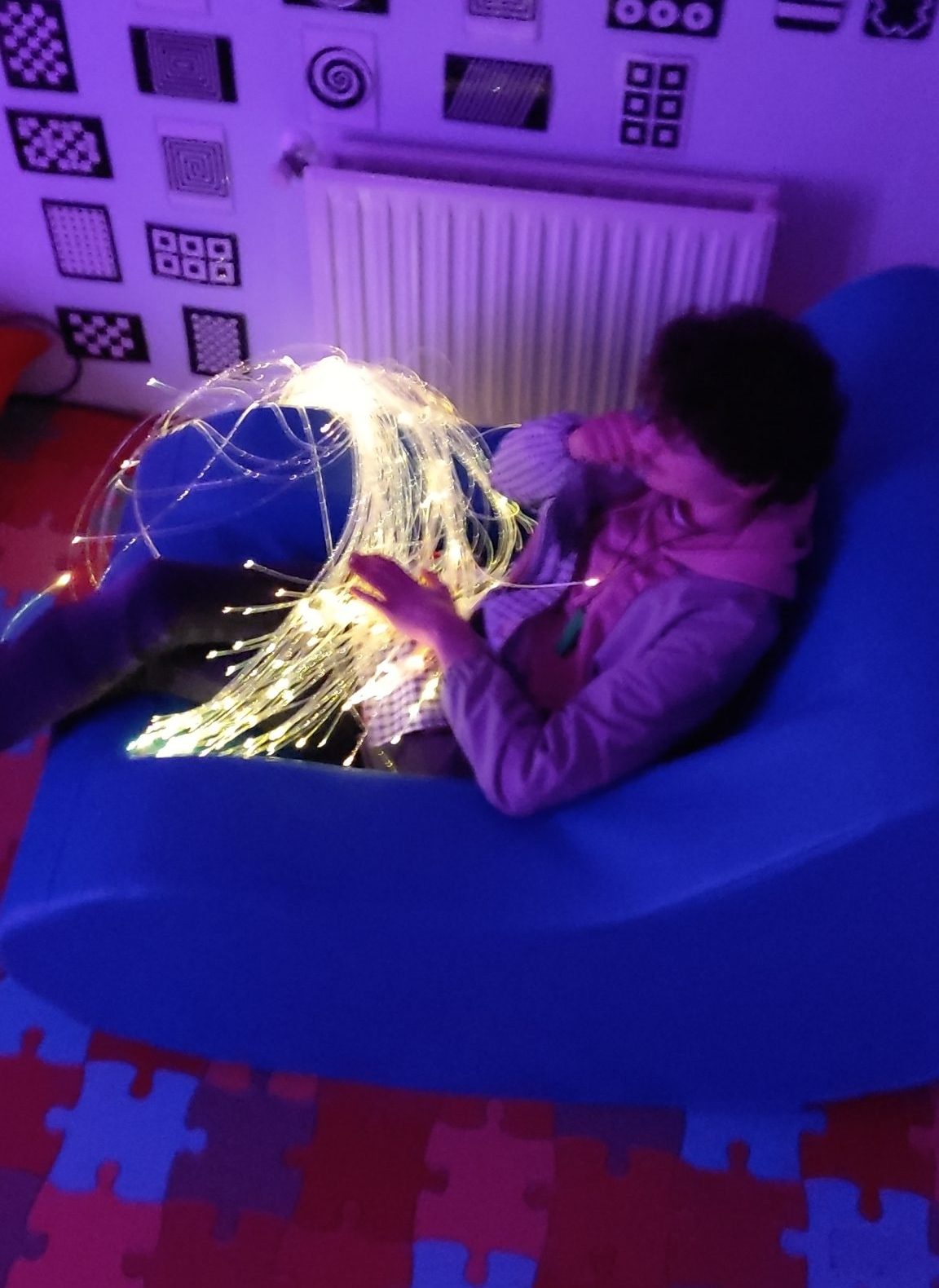
Overloading him with stimuli is not advisable, so we start the session with relaxing music, at a low volume. After a few minutes, we add some activity to the bubble tube, with a steady and continuous vibration. We change the colour of the column (within a palette of cold colours, since they are relaxing) in a slow sequence, which is varied by Javier himself thanks to the button panel (button 6). We act as his guide, directing his hand, as he lacks the intention to do it independently.
After a few minutes, we leave the blue light fixed on the bubble tube and add a gentle vibration to the armchair or rocking chair in which he is sitting. If we don’t have a vibro-acoustic chair, we can transform the foam furniture we have thanks to the Qinera converter element.
Sometimes, we also work with fibre optics before introducing vibration, as a tactile and proprioceptive element, always seeking calm and relaxation, with cold colours (blue, green, violet…).
“We are constantly observing his reactions, since he doesn’t react to the same stimuli in the same way every day. That’s why we integrate them one by one, individually, observing his response”. Verónica Herrero Prieto (Therapeutic Pedagogy at the Special Education Classroom)
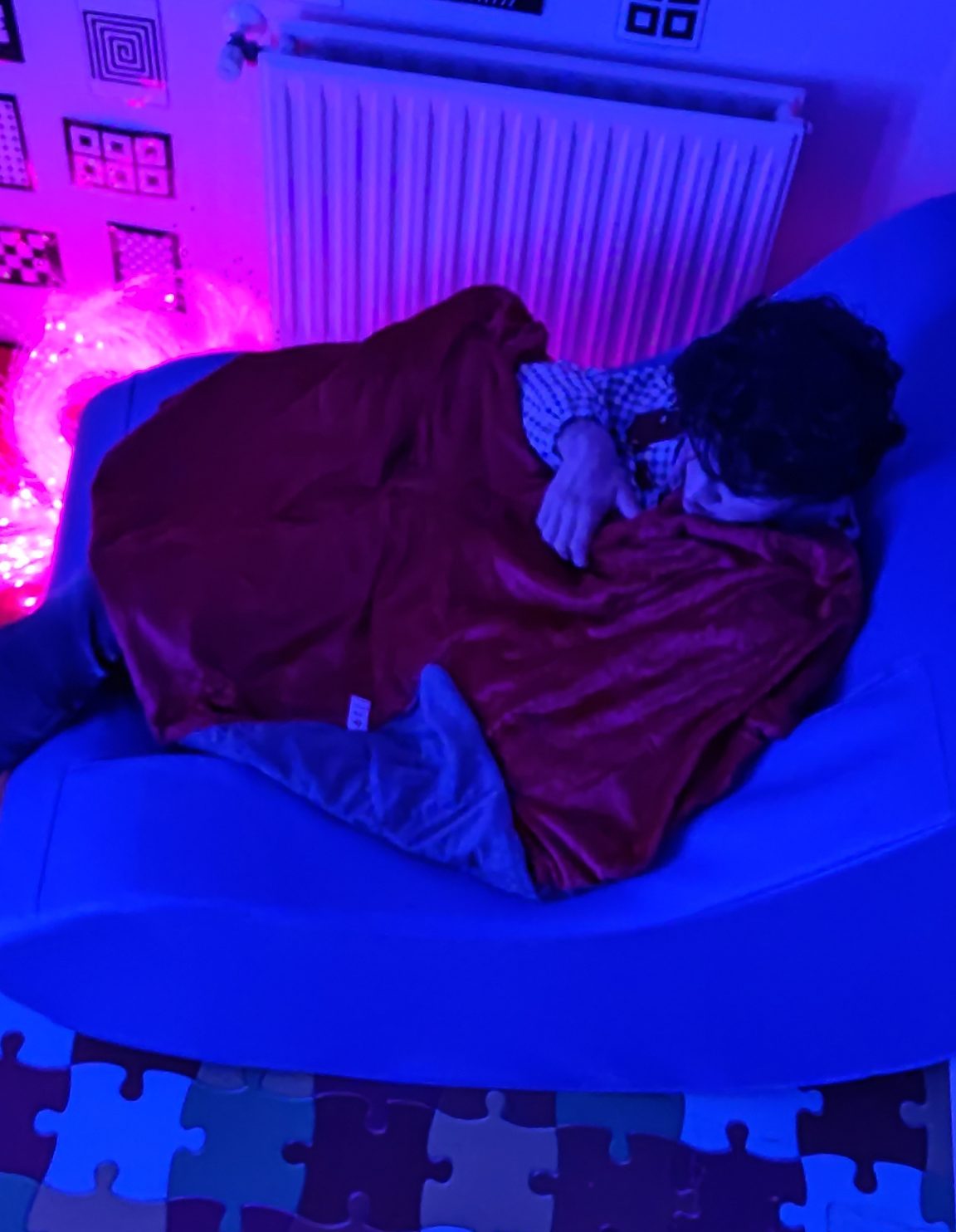
Looking for a little more relaxation, we work with the weighted blanket, as it is a great proprioceptive stimulus that helps him to regulate himself. Progressively, we vary its location on Javier (on the shoulders, shoulder girdle, pelvic girdle…). By providing deep pressure, we are giving him a tactile and proprioceptive stimulus, thus working on sensory difficulties. It is a pressure that is exerted on different areas and which provides a sensation similar to being held or firmly caressed. The aim of this activity is to enhance the feeling of calm and reduce anxiety.
Depending on his responses and reactions, we sometimes continue to work on proprioception with the different rollers, balls and proprioceptive elements that we have, always starting with deep pressure on a part of his body, which we gradually reduce throughout the session, concluding with the brushes with which we carry out much more superficial proprioceptive work.
“Proprioceptive work helps us to improve aspects such as posture, balance, muscle tone, gravitational security and coordination. All of this has a positive impact on Javier’s ability to self-regulate and organise his movement”. Alicia López Marcos (Physiotherapist)
There are no magic solutions for working with students with this type of disorder. At the school, we work to incorporate resources and materials that benefit our students in some way.
If you want to learn more about the benefits of Multisensory Environments or see how you could adapt it to your space, therapeutic goals, and users, you can send an email to hello@qinera.com.
Occupational Therapist. Specialist in pshycomotricity, music therapy and sensory integration.
Read more posts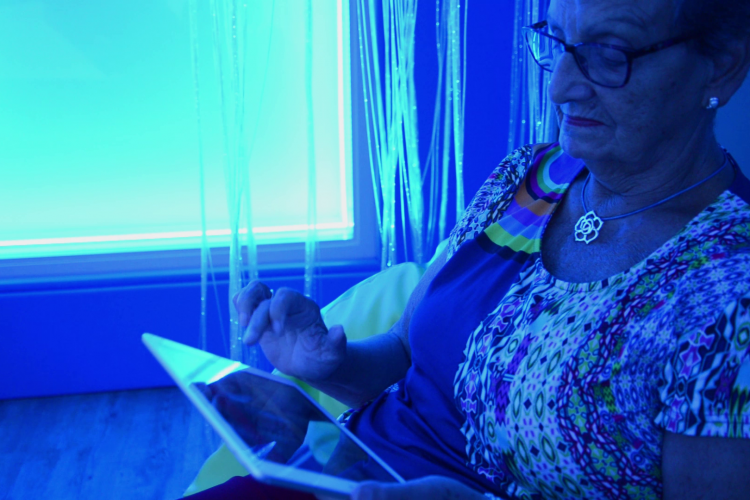
18 September 2024
Currently, new technologies are playing a fundamental role in improving the health and well-being of the elderly or dependent individuals. Among the numerous innovations and...
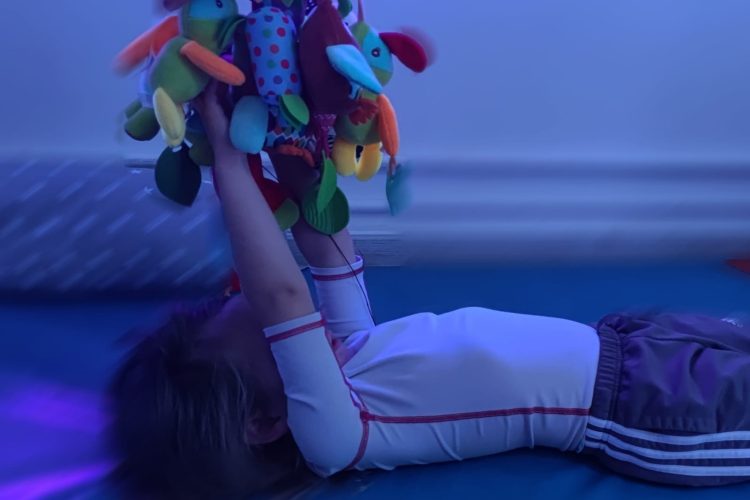
5 July 2024
Aiala Grajirena is a therapeutic pedagogy teacher at San Miguel School (Doneztebe). Since the 2020-21 school year, they have been developing a project for a...
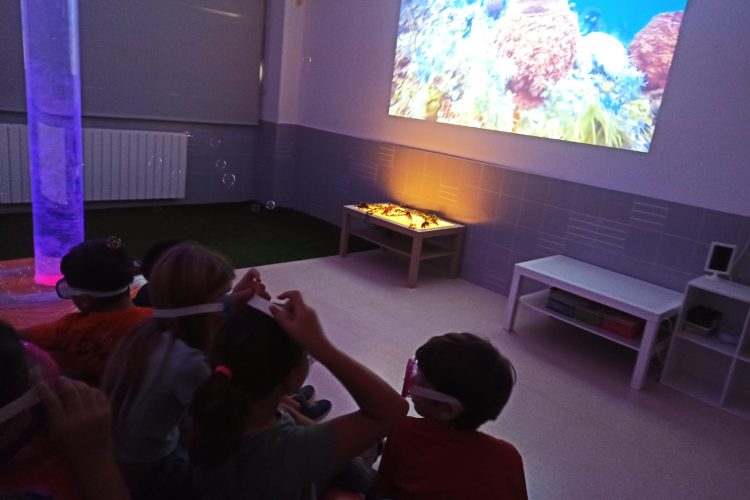
13 June 2024
One of the main questions that arises when considering installing a multisensory classroom in a regular school is whether it is really a good investment....